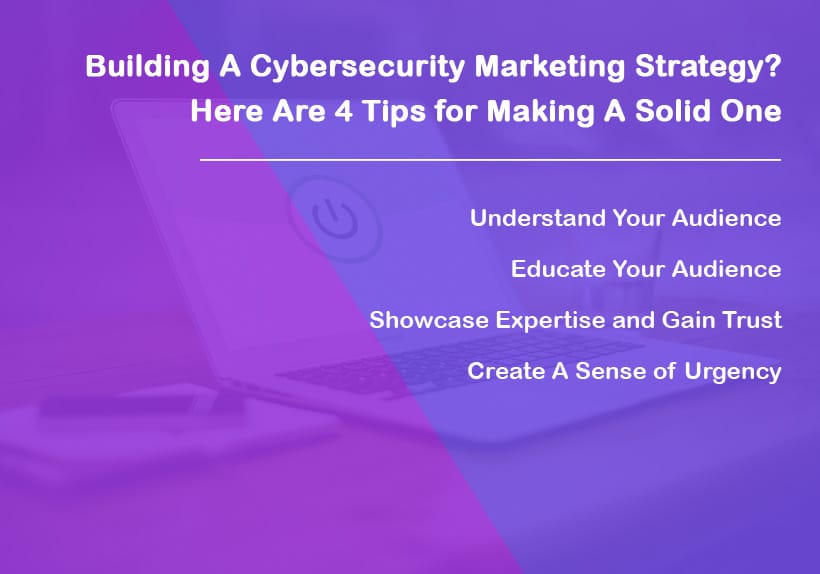Building A Cybersecurity Marketing Strategy? Here Are 4 Tips for Making A Solid One

The cybersecurity products and services market has high competition. Therefore, you need a foolproof cybersecurity marketing strategy to establish your expertise and stand out. Over the recent years, the cybersecurity landscape has changed, with several companies losing millions of data in a breach.
Consequently, cyber security has become business-critical, leading to increased competition as many businesses are now selling cybersecurity solutions. Fortunately, this article explores tips for building a credible cybersecurity marketing strategy to stand out. Nevertheless, besides the tips discussed, investing in advertising services for cybersecurity firms is another way to stand out.
How Can You Build A Credible Cybersecurity Marketing Strategy?
Considering the following tips can help you create a solid marketing strategy
-
Understand Your Audience
The first step in all marketing strategies is to understand your target audience. You can do this well by creating marketing personas.
A persona is more of a semi-fictional representation of your ideal customer. This helps you put a face to your target audience and also provides actionable insights on the strategies that will work best. These strategies could include how to communicate, the best marketing channels to use, and the messaging that will create the desired impact.
You should address small businesses if you are selling to small businesses. For instance, creating content focusing on high-profile cybersecurity attacks on popular organizations like the NHS may leave small businesses thinking their company is not at risk.
In addition, it is best to ensure that you are clear about who you are targeting with your message in these organizations. You can create 2 to 3 personas to cover the roles you want to speak to. For example, in smaller businesses, you may need to target both the CEO and the CTO. But in larger organizations, you may include CFOs, CISOs, and risk managers. Generally, all these individuals have different pain points, and you must address them differently.
-
Educate Your Audience
All businesses need cybersecurity. However, only a few people outside the tech industry know beyond what is written in the headlines. Therefore, education is integral to every cybersecurity marketing strategy.
Many business owners see news headlines about cybersecurity attacks. Still, they do not understand the dangers or how it affects their business. They may also be looking to know where to start and how to mitigate the risks. A cyber security marketing strategy should answer the audience’s questions and show them how to get started.
Furthermore, many businesses are complacent about the threat of cybersecurity, thus constituting problems for marketers. Explaining the risks and imminent dangers is part of the marketing strategy. A part of it is also overseeing potential threats and risks first and then educating about them. In the process of finding those risks, continuous security monitoring tools can come in very handy.
Content marketing is crucial in educating your audience. By leveraging Cybersecurity content marketing strategies, you can deliver targeted and informative resources that highlight risks and build trust, helping potential clients understand the importance of robust cybersecurity solutions. To educate your target audience, creating informative digital content like blogs, downloadable content, video tutorials, and webinars is best. You can also use other types of content like adverts in print publications, flyers, and brochures to hand out to customers at events.
-
Showcase Expertise and Gain Trust
There’s a lot on the line when businesses make decisions about cybersecurity solutions. For instance, non-compliance can attract huge fines. In addition, it may be challenging to come back from the risk of reputational damage, just as any financial hit.
Business owners must find solutions they can rely on since there is so much at stake. Therefore, your marketing strategy should prove that they are in safe hands.
Showcasing your expertise and building trust is essential. Nevertheless, that does not translate to producing text-heavy manuals with a lot of technical language and jargon. Instead, it means providing easy-to-digest content about your product and services’ effectiveness in protecting customers from past cyber threats. You can also include case studies showcasing success stories and testimonials from satisfied customers. And with this in mind, you can highlight how seo cyber security helps people find reliable guidance without feeling overwhelmed. In addition, you can bring your blog to life by including real-life examples of your team’s practice, services, and products.
It is best to ensure that your content is data-led. Always include accurate statistics, facts, and figures to communicate your expertise. You should also ensure that your headlines and social media content contain attention-grabbing statistics.
-
Create A Sense of Urgency
The final tip discussed in this blog is creating a sense of urgency. Many businesses do not see cybersecurity as a priority, and convincing them is challenging.
There are several reasons why a business may be reluctant to prioritize cyber security. And one of them could be complacency. Sometimes it could be that they don’t fully understand the threat or because of expenses. In addition, they could believe that cybersecurity is not as critical as their core work and thus want to focus their resources on something else.
In your marketing strategy, you must figure out convincing messaging for your target audience, proving that cybersecurity is critical. Creating a sense of urgency is vital.
Nevertheless, it is essential to get your messaging right. You don’t have to use scare tactics by creating a series of blogs that may end up terrifying your potential customers instead of educating them on the risks.

